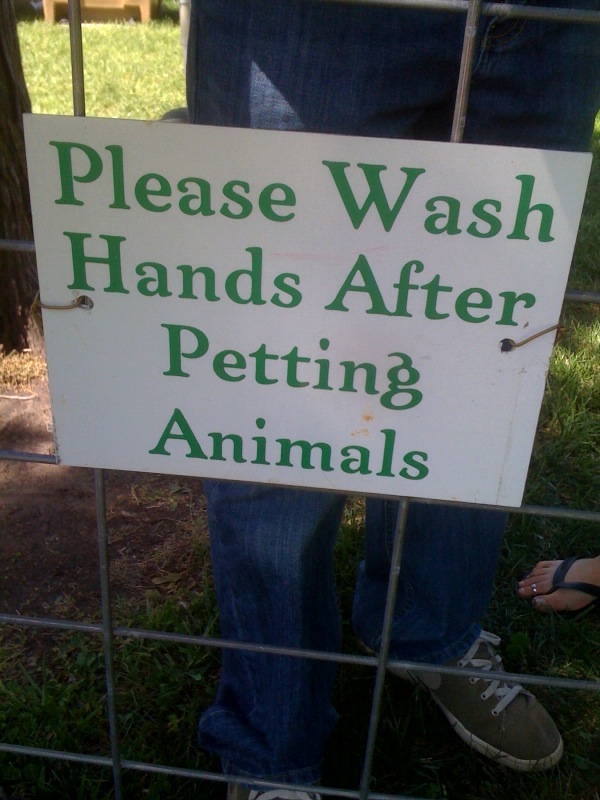Another meaningless survey relying on self-reporting has found 50 per cent of 1,053 U.S. respondents said they "wash their hands more thoroughly or longer or more frequently" in public restrooms as a result of the H1N1 virus –  that’s up from 45 percent in 2009 when the same question was asked.
that’s up from 45 percent in 2009 when the same question was asked.
But even if people think they are vigilant about washing their hands – observational studies say they aren’t – are people washing and drying hands in a way to lower bacterial loads? Not drying hands thoroughly after washing them could increase the spread of bacteria, and rubbing hands whilst using a conventional electric hand dryer could be a contributing factor. Frequently people give up drying their hands and wipe them on their clothes instead.
That’s what I observed anecdotally when I first visited Kansas State University in 2005 and saw these groovy all-in-one hand units that are terrible for hand sanitation; paper towels were subsequently installed so people could at least dry their hands properly.
A study by researchers at the University of Bradford and published in the current Journal of Applied Microbiology evaluated three kinds of hand drying and their effect on transfer of bacteria from the hands to other surfaces: paper towels, traditional hand dryers, which rely on evaporation, and a new model of hand dryer, which rapidly strips water off the hands using high velocity air jets.??
In this study the researchers quantified the effects of hand drying by measuring the number of bacteria on different parts of the hands before and after different drying methods. Volunteers were asked to wash their hands and place them onto contact plates that were then incubated to measure  bacterial growth. The volunteers were then asked to dry their hands using either hand towels or one of three hand dryers, with or without rubbing their hands together, and levels of bacteria were re-measured.
bacterial growth. The volunteers were then asked to dry their hands using either hand towels or one of three hand dryers, with or without rubbing their hands together, and levels of bacteria were re-measured.
??Dr Snelling and her team found that rubbing the hands together whilst using traditional hand dryers could counteract the reduction in bacterial numbers following handwashing. Furthermore, they found that the relative reduction in the number of bacteria was the same, regardless of the hand dryer used, when hands were kept still. When hands are rubbed together during drying, bacteria that live within the skin can be brought to the surface and transferred to other surfaces, along with surface bacteria that were not removed by handwashing.
The researchers found the most effective way of keeping bacterial counts low, when drying hands, was using paper towels. Amongst the electric dryers, the model that rapidly stripped the moisture off the hands was best for reducing transfer of bacteria to other surfaces.

 Alexander the Great (356–323 BC)
Alexander the Great (356–323 BC).jpg)
 survey released in May and discussed by my friend and his wife as they drove to Vermont and back.
survey released in May and discussed by my friend and his wife as they drove to Vermont and back. “People would be horrified at the prospect of eating from a toilet seat however they ought to be aware that eating from a contaminated car dashboard may represent the same health hazards.”
“People would be horrified at the prospect of eating from a toilet seat however they ought to be aware that eating from a contaminated car dashboard may represent the same health hazards.” mice that then leave their droppings and disease and make people barf.
mice that then leave their droppings and disease and make people barf. lemon wedges or iced tea dispensers and yes, there are bacteria present, but where are the bodies? Where are the sick people from these practices?
lemon wedges or iced tea dispensers and yes, there are bacteria present, but where are the bodies? Where are the sick people from these practices? and swap saliva with a bunch of animals like cows, and llamas and alpacas, without supervision, and then go eat food or suck their fingers or whatever.
and swap saliva with a bunch of animals like cows, and llamas and alpacas, without supervision, and then go eat food or suck their fingers or whatever.